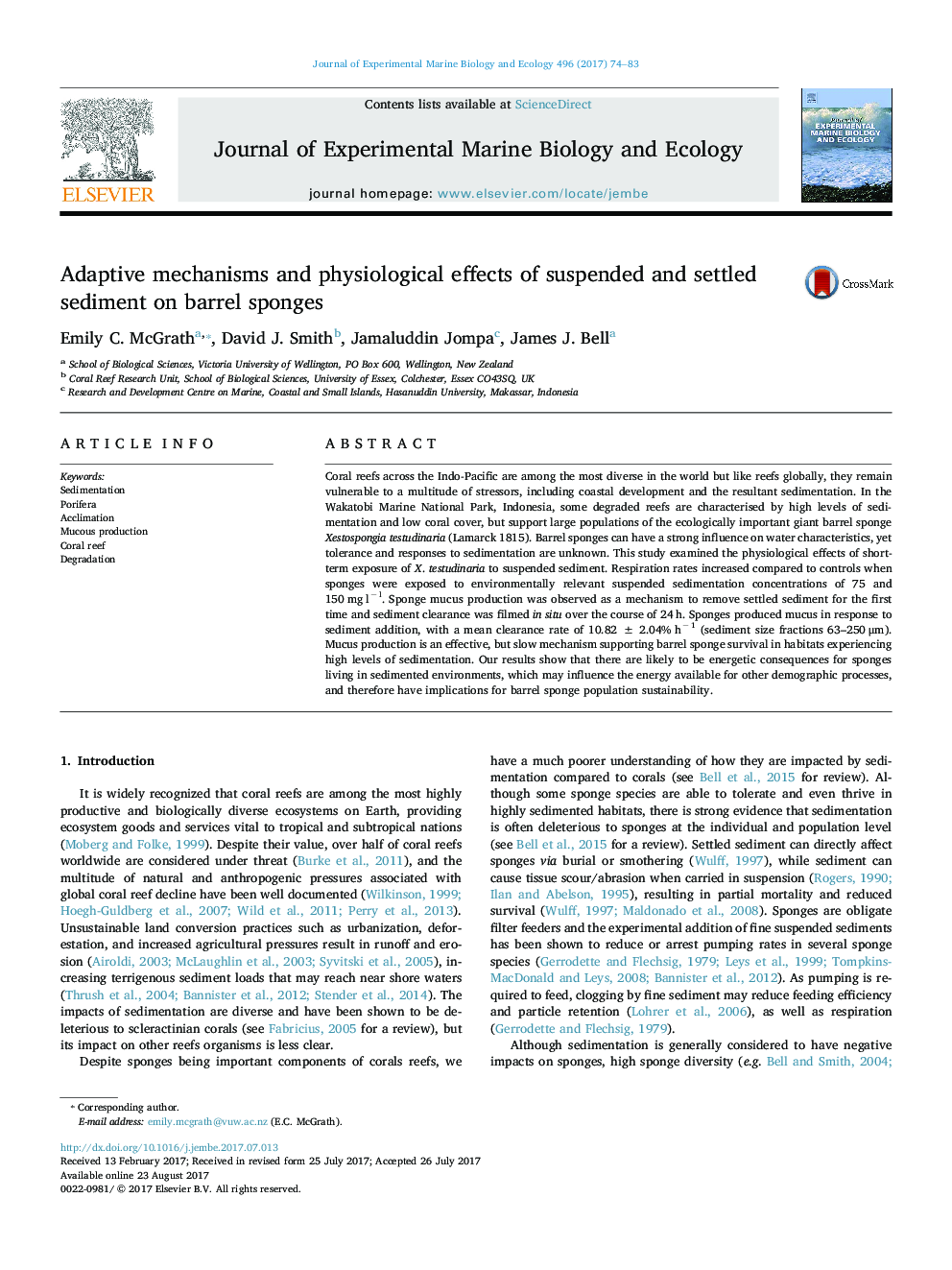| کد مقاله | کد نشریه | سال انتشار | مقاله انگلیسی | نسخه تمام متن |
|---|---|---|---|---|
| 5744541 | 1618379 | 2017 | 10 صفحه PDF | دانلود رایگان |
- Increased sedimentation is of major concern in the Indo-Pacific region.
- We examined short-term suspended sediment exposure effects on X. testudinaria.
- Respiration rates increased in response to sediment addition and mucous were produced.
- Sponges have acclimation mechanisms to enable survival in sedimented environments.
- Important energetic consequences for sponges living in sedimented environments
Coral reefs across the Indo-Pacific are among the most diverse in the world but like reefs globally, they remain vulnerable to a multitude of stressors, including coastal development and the resultant sedimentation. In the Wakatobi Marine National Park, Indonesia, some degraded reefs are characterised by high levels of sedimentation and low coral cover, but support large populations of the ecologically important giant barrel sponge Xestospongia testudinaria (Lamarck 1815). Barrel sponges can have a strong influence on water characteristics, yet tolerance and responses to sedimentation are unknown. This study examined the physiological effects of short-term exposure of X. testudinaria to suspended sediment. Respiration rates increased compared to controls when sponges were exposed to environmentally relevant suspended sedimentation concentrations of 75 and 150 mg lâ l. Sponge mucus production was observed as a mechanism to remove settled sediment for the first time and sediment clearance was filmed in situ over the course of 24 h. Sponges produced mucus in response to sediment addition, with a mean clearance rate of 10.82 ± 2.04% hâ 1 (sediment size fractions 63-250 μm). Mucus production is an effective, but slow mechanism supporting barrel sponge survival in habitats experiencing high levels of sedimentation. Our results show that there are likely to be energetic consequences for sponges living in sedimented environments, which may influence the energy available for other demographic processes, and therefore have implications for barrel sponge population sustainability.
Journal: Journal of Experimental Marine Biology and Ecology - Volume 496, November 2017, Pages 74-83
